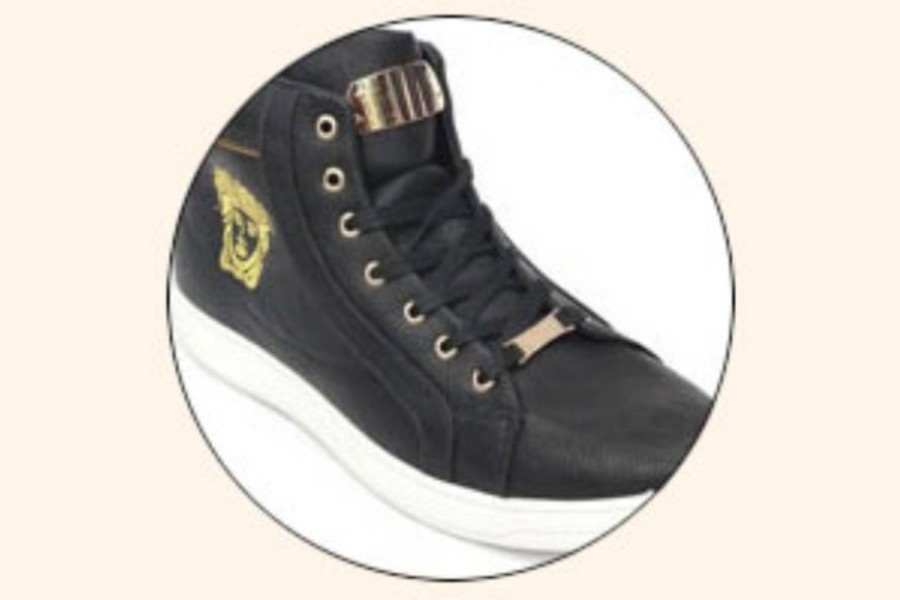As China moves away from synthetic products and in to high-tech industries, Bangladesh footwear industry could occupy a large portion of the vacancy left in the synthetic leather market, the global worth of which was US$84.1 billion in 2020. This market is expected to increase exponentially to $174.7 billion by the end of 2031. It is understood that footwear comes on the heels of garments as a basic consumer product and the domestic footwear industry could increase its export earnings threefold over the next few years if it got the right policy support from the government.
Currently, Bangladesh exports nearly $450 million worth of non-leather footwear (FY2021-22), where sports footwear accounts for about half the earnings. The EU takes 65 per cent of our footwear exports and other major destinations include India, Morocco, Turkey, Russia and the United States.
With China shifting away from footwear to other high value products, countries like India, which is one of the biggest importers of synthetic footwear, will be looking at alternative supply chains. Given these circumstances, Bangladesh needs to strategise, both in the short- and long-term regulations so that the country can double its export to cross the billion-dollar market in the next year or two.
As a presentation made by Policy Exchange titled 'Export Diversification Imperative: Key Sectoral Opportunities and Policy Priorities for Bangladesh' recently shows, Bangladesh contributes only 2.0 per cent of the world's footwear production and is ranked 6th globally. With China's rising labour costs and its move away from this sector, brands will be looking to diversify their supply chain and this presents opportunities for Bangladeshi manufacturers. Looking beyond the domestic market, Bangladeshi manufacturers' share of exports grew nearly fourfold from $200 million in 2009 to $968 million in 2018.
When it comes to non-leather footwear, Bangladesh ranked 21st in 2018 in terms of export value and 20th by volume. If one looks at the data from the Export Promotion Bureau (EPB), export of synthetic footwear and sports shoe registered an annual growth rate of about 20 per cent in the preceding five years. Industry players have likened the rise of non-leather footwear to be a good alternative to garments and given its growth trajectory, the sector could become another success story like the RMG sector. Indeed, we learn from Apex Footwear that non-leather footwear has greater export potential than leather shoes as there has been a shift in demand from traditional leather shoes to non-leather / synthetic footwear, driven mainly by the growing demand of the younger generation. Local companies like Shoeniverse Footwear saw its export earnings grow by 29.19 per cent, 49.28 per cent and 40.52 per cent over the last three financial years, whereas, Apex Footwear reportedly exported more than 500,000 pairs of non-leather shoes in 2020.
Despite these successes, synthetic manufacturing in the country suffers from a lot of constraints. In terms of market and infrastructure, there is a dearth of skilled workforce, inadequate training programmes, a lack of or dysfunctional common effluent treatment plants (of importance since synthetic shoemaking is a chemically-intensive process), access to markets through trade agreements and the global push towards sustainability and compliance.
Again, as pointed out by the Policy Exchange, there is no strategic direction to develop the sector. Exorbitant sums are involved in obtaining necessary certification. The tax regime and business environment require stability so as to enable entrepreneurs make investment plans. Thirdly, entrepreneurs face problems in accessing finance. The present tenure for funding is short term in nature, which make it costly for small firms or new entrants. Smaller companies do not have access to global funds and are generally ill-equipped to access climate funds.
For Bangladesh to take advantage of the changing dynamics in global footwear production there is a need to address all of these bottlenecks. One of the ways could be to encourage joint ventures for production of synthetic leather and chemicals in the country, so that backward linkage for production plants is readied. Policymakers need to develop a policy framework to develop the industry with a vision up to 2041. More specifically, the industry needs incentives and policy support for investment in backward linkages to help sectoral growth by reducing lead time and increasing value addition.
To develop markets and infrastructure, Bangladesh needs standard training programmes to build a skilled workforce and such training must be supervised by qualified and experienced trainers. Facilitating trade agreements with non-traditional markets is another strategy that needs to be explored and pursued. Local companies need lots of investment to gear up their capacities to catch a greater share of the global market and here the central bank has a role to play. It has been suggested that Bangladesh bank, through BIBM (Bangladesh Institute of Bank Management) may expand the training programme to promote sustainable lending by providing knowledge about existing financing facilities. Thus smaller entrepreneurs can gain access to Export Development Fund if credit assessment and procedures are simplified. There is a need for a long-term strategy to develop the synthetic sector. For large amounts of FDI that will be needed to transform the sector as a whole, policies need to be formulated to make it attractive to investors, particularly, "easing of repatriation of profits, dividends and capital by foreign investors and salaries of foreign workers."
mansur.thefinancialexpress@gmail.com


